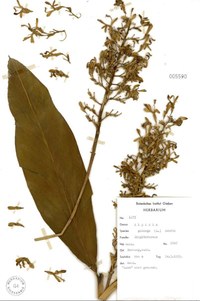Herbarium
Facts about the Herbarium Gießen




- Actually registered specimens: 23517 (state 01.01.2021)
- 23% of the actually registered stock originates from the botanical garden of the JLU Gießen – manly from the 1960th and 1980th years
Geographical focuses of the actually registered field-collections are:
- Germany with about 38% of all specimens, mainly Hesse (5373)
- other European countries with about 32% of all specimens, manly Italy (2739), Austria (1049), Spain (1034) and Greece (833)
- From non-European countries originate about 7% of all specimens, manly Indonesia (536) and Colombia (535)
| Origin | Number of specimens | Percentage of all |
|---|---|---|
| Botanical Garden Giessen |
5165 | 22,7 |
| Germany | 8740 | 38,3 |
| Hesse | 5373 | 23,6 |
| Berlin (West) | 739 | 3,2 |
| Lower Saxony | 715 | 3,1 |
| Bavaria | 674 | 3,0 |
| Rhineland-Palatinate | 386 | 1,7 |
| Europe (except Germany) |
7246 | 31,8 |
| Italy | 2739 | 12,0 |
| Austria | 1049 | 4,6 |
| Spain | 1034 | 4,5 |
| Greece | 833 | 3,7 |
| Portugal | 432 | 1,9 |
| France | 332 | 1,5 |
| non-European countries | 1647 | 7,2 |
| Indonesia | 536 | 2,4 |
| Colombia | 535 | 2,3 |
The largest collections in the actually registered stock are from
- Prof. Gerhard Gottsberger and members of staff (in particular Ulrich Hartmann): ca. 5000 sheets from the 1980th and early 1990th years – manly from South-Europe (Italy, Portugal, Spain) and Germany (Hesse, Rhineland-Palatinate)
- Prof. Hans Franz Neubauer (1911-1989): 2177 sheets from the 1960th and 1970th years – primarily from the botanical garden of the JLU Gießen and Indonesia
- Dr. Jochen Schwandt (*1942): 1529 sheets manly from the 1960th years, focus: Berlin (West), alps (Bavaria, Austria), south France
- Dr. Hans Kugler (1903-1985): 1123 sheets manly from the 1960th and 1970th years, oldest sheets from 1910, youngest from 1977, primarily from the Mediterranean area (Italy, Croatia, Dalmatia, Greece)
The main focus of the actual collecting is still on the botanical garden of the JLU Gießen and on the flora of Hesse.
For requests please contact: Dr. Martin de Jong
